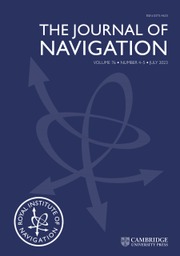No CrossRef data available.
Article contents
Low-cost SDR-based GNSS signal recorder and replayer for equipment testing
Published online by Cambridge University Press: 07 November 2025
Abstract
The need for Global Navigation Satellite System (GNSS) receiver testing increases with the advent of widespread Internet of Things (IoT) technologies and other electronic devices dependent on position determination. In this paper, a low-cost GNSS multiband L1+L5 signal recorder and replayer for equipment testing purposes is proposed. It is implemented using Software-Defined Radio (SDR) modules HackRF One with proper time and phase synchronisation. The recorder–replayer has been tested with GPS, GALILEO, BEIDOU and GLONASS satellites and several commercial GNSS receivers. Reduced GNSS signal bandwidth of approximately 10 MHz is sufficient for efficient reception of recorded signals. Performed tests with a driving car show applicability of this GNSS recorder–replayer in dynamic settings.
Information
- Type
- Research Article
- Information
- Copyright
- © The Author(s), 2025. Published by Cambridge University Press on behalf of The Royal Institute of Navigation


